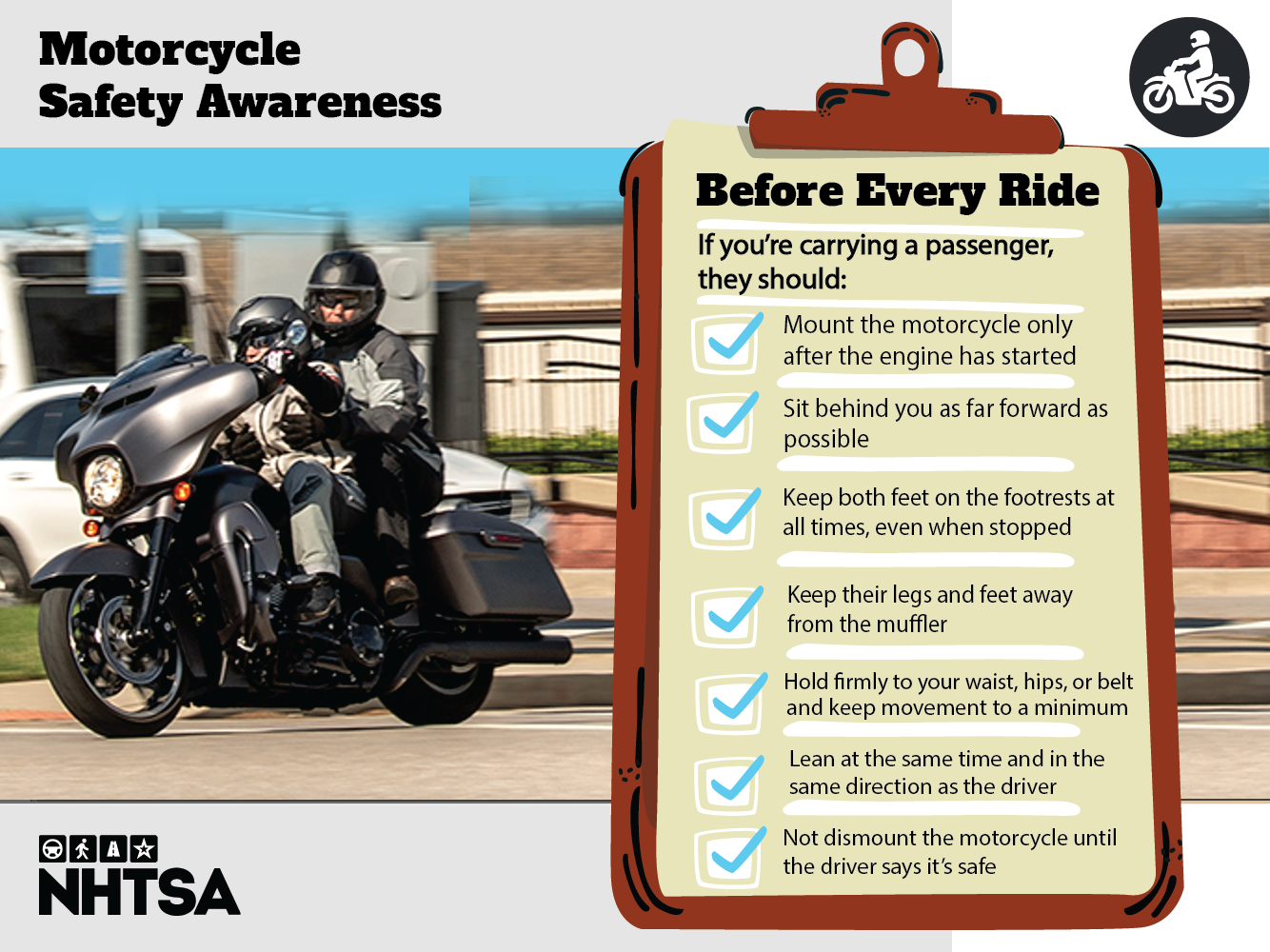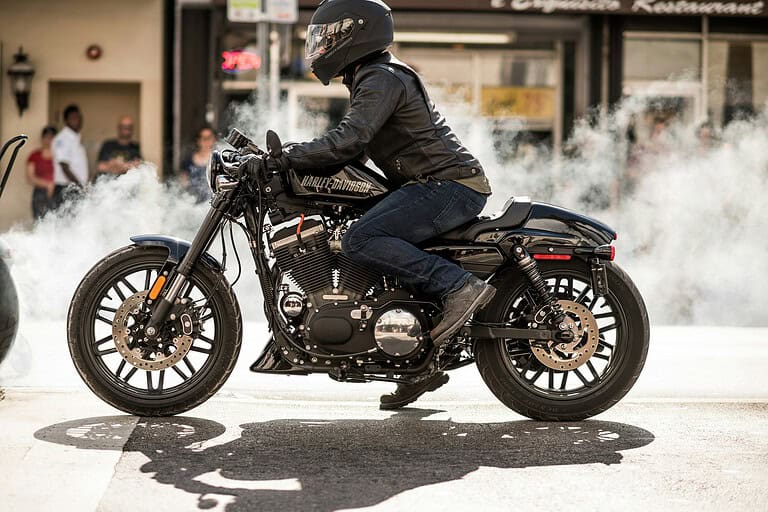How Dangerous is Riding A Motorcycle? (The Data Based Truth)
If you’re interested in learning how to ride a motorcycle, you’ve likely encountered stiff resistance from those around you who’ve heard about your interest. Friends, family, and significant others often strongly react to sitting on top of a tank of highly flammable liquid directly above an internal combustion engine, traveling at highway speeds with absolutely no frame, windows, or walls to protect you.
So how dangerous is riding a motorcycle?
We’re here to say, motorcycles aren’t really as dangerous as people say they are.

Now, we know that statement isn’t going to give you much to dissuade the naysayers, so below we’ve dug into it so you’ve got some actual statistics and data to help your cause.
And who knows? Maybe you’ll teach someone something new.
Let’s get into it.
Are Motorcycles Actually Dangerous?
Such a simple question that so many ask, especially those who are interested in partaking in this awesome hobby.
The reality of it is, that the answer isn’t that straightforward when it comes to motorcycle safety. There are a huge number of variables to take into account – especially other vehicles on the road.
So are motorcycles actually dangerous?
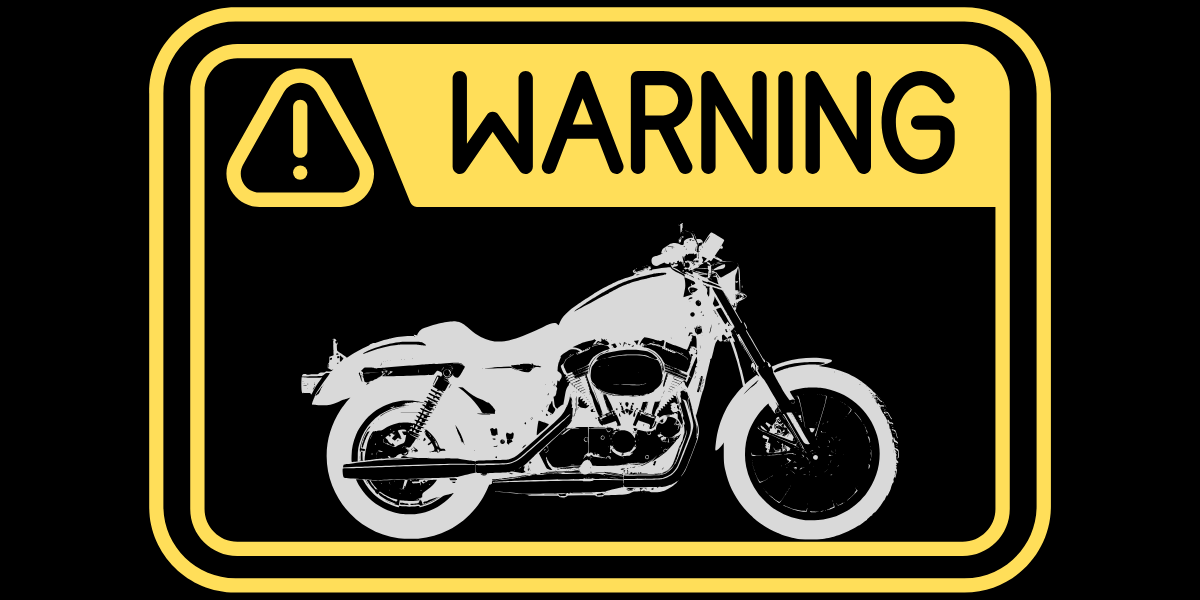
The short answer: Yes; but there are many things we can do as riders to improve safety and become a skilled (and safe) motorcycle rider. And in our opinion, that’s completely worth it for the exhilaration and freedom that come with riding.
What Makes Riding a Motorcycle Dangerous?
It’s easy to see that you’re pretty exposed when you’re on two wheels. The gear that you wear becomes, essentially, the walls of your car: the only thing between you and the pavement in the event of an accident.
A motorcycle accident isn’t like a car accident. There is no crumple zone, there are no airbags, and there isn’t much tech baked into bikes other than ABS that will help you in an accident.
Passenger cars today are embedded with tons of technology, which often relieves the driver of having to pay attention and make specific inputs.
In our opinion, features like lane assist, adaptive cruise control, blind spot warnings, and the like only increase the ability of the driver to disengage from paying attention to the road.

That constitutes a major threat as a motorcycle rider. Throw in smartphones and GPS, and as riders, we have to be exceptionally alert on the road.
Having fewer wheels touching the road inherently makes it easier to lose control in a slip or slide. This can be caused by gravel or other debris on the road.
If you’re riding year-round, inclement weather can cause new hazards that don’t exist in the warmer months: Tires take longer to get to an optimal temperature, rain makes sewer covers, road paint, and tar snakes more slippery, and the cold can affect your dexterity (especially with thicker gloves).

Many riders are adrenaline junkies, and with that comes a tendency to ride in, let’s say, a spirited manner. That said, the data does show that injury and the potential for serious injury or a fatality increases drastically with excessive speed.
Here’s the Data: Statistics and Facts
Let’s take a look at some quick facts from the NHTSA: that’s the National Highway Traffic Safety Administration. This isn’t designed to instill fear, but rather to simply inform.
(As a note, these numbers are from 2022, as this is the most recent full year of reported data)
- In 2022, there were 6,218 motorcycle riders involved in fatal accidents – this is 15% of all traffic fatalities.
- Based on miles traveled motorcycles were 4 times more likely to be injured and 22 times more likely to die in a crash than passenger vehicle occupants.
- Of all the fatal crashes involving motorcyclists in 2022, 35% of them were riding without a valid endorsement.
- 7.8% of all fatal crashes involved a distracted driver.
- Motorcyclist injuries decreased by 2.6% since 2021.
- Of the motorcyclists killed in a single-vehicle crash in 2022, 42% were alcohol-impaired.
- 35% of all motorcycle riders in a fatal crash in 2022 were speeding.
Some of these statistics paint a pretty grim picture, but don’t be discouraged. Accidents do happen, but the good thing is that there is plenty that we can do as riders to prevent motorcycle crashes.
Crash Statistics and Risks: The Reality
Motorcycle rider death totals are increasing – but you have to also factor in the number of motorcycles that are on the road, and the number of miles they’re riding each year.
For example: If the number of motorcycles on the road drastically increases, then the total number of crashes could certainly increase, but still be a much smaller percentage of motorcycle riders overall.
Based on the below information, we can see that even though the totals may be increasing, the rate per 100 million vehicle miles traveled is trending downward, for both injuries and fatalities.
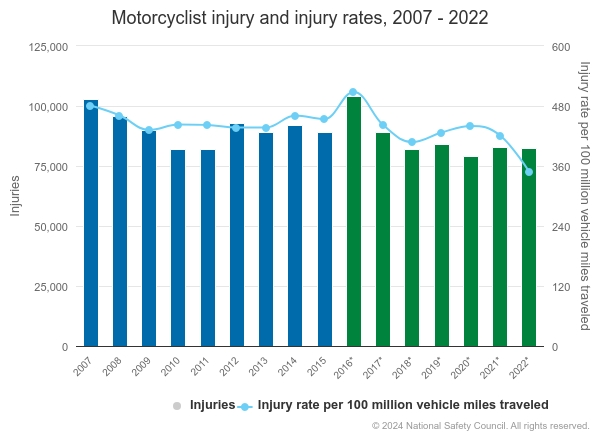
That doesn’t make the potential of, or the reality of, a crash any less scary, it just means that sometimes data can be skewed and pitched in such a way as to scare off potential riders.
We also have to factor in that there are many more types of two-wheeled vehicles on the road today, whether those are mopeds, electric bikes, or scooters. There may be accidents on these vehicles that aren’t accounted for.

In the same vein, there may be motorcycle accidents that go unreported if the injury was minor and the rider had enough protective gear on to easily walk away.
Where Do Motorcycle Fatalities Typically Happen
For those of us who have been riding awhile, it’s almost impossible to avoid coming across a motorcycle fatality at some point.
Here in the Pacific Northwest, it seems like every summer once the rain has departed for sunshine, the local motorcycle groups start posting “rider down” and “check your people” posts. It’s pretty discouraging and can contribute to additional fear when getting out on the road.

This is where it’s critical to mention that rider education is super important to preventing a motorcycle crash. Rider safety is your responsibility as a rider, and it’s our collective job as riders on the road to expect the unexpected.
Be aware of other road users, remember we aren’t the only motor vehicle on the road, take special care at traffic lights, use your signal indicators, wear the right gear, and you’ll be able to avoid the vast majority of serious accidents (not to mention some serious medical bills).
Motorcycles Are Safe (When Ridden Safely)
There is always going to be an element of risk when straddling your motorcycle, but if most riders out there focus on motorcycle safety and building skills overall, we can collectively reduce the number of motorcycle fatalities that we’re seeing nationwide. Here are some quick tips on some easy things to focus on.
What Can I Do to Be Safer on a Motorcycle?
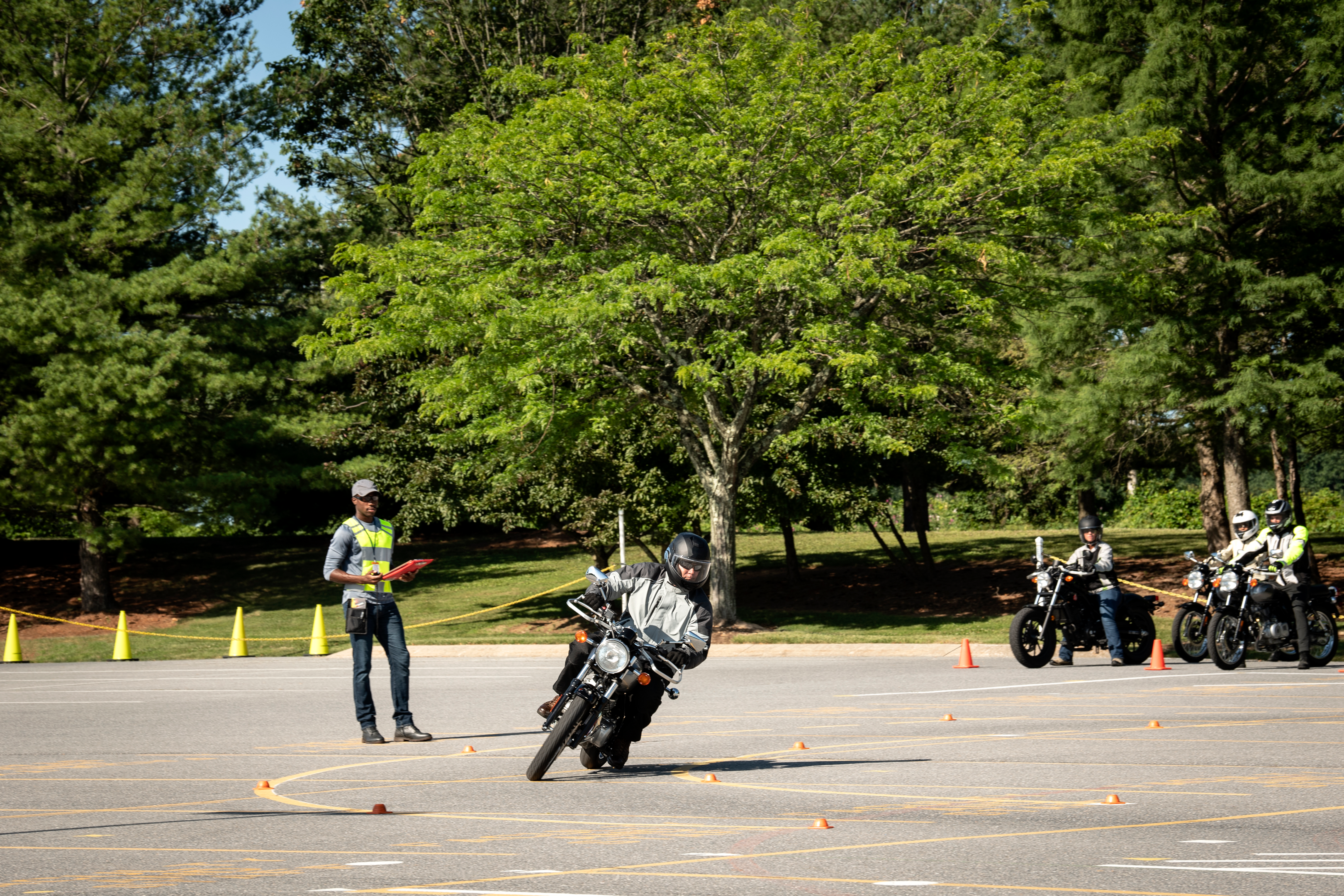
Wear Appropriate Gear
According to the CDC, simply wearing a helmet reduces the risk of death by 37%. We know that there are some states out there that don’t require it, and we’ll always be in favor of you exercising your right to choose. Wearing helmets isn’t always the most popular thing, but we’d still strongly recommend it.
Don’t stop at a helmet either; gear up as best you can with gloves, a jacket, pants, and motorcycle riding-specific boots.
Stick to the Speed Limit
As mentioned above, 35% of all motorcycle crashes resulting in a fatality involved speeding. The more you can exercise good judgment in your motorcycle riding, the more likely you’ll be able to respond to road conditions, adjust your movements to other drivers on the road, and stay safe.
Develop and Practice Skills
We recently put together a post highlighting some beginner motorcycle tips and one of the items on that list was to take a safety course.
The learning doesn’t have to stop there, though! Many of the same organizations that have basic riding courses offer additional courses. These can be refreshers for the basic riding course, or intermediate and advanced skills courses to help you become a better rider with proper instruction.
The bottom line is, that ongoing training is critical for you when it comes to being on two’s.
Don’t Drink and Ride
It’s tempting, especially on a hot day, to stop for a cold one and a meal. But even one can negatively affect your ability to operate your motorcycle effectively.
If you want to stop for a drink, avoid riding for at least a few hours so that when you do get back on the road, you won’t end up a statistic.
How to Increase Safety on a Motorcycle
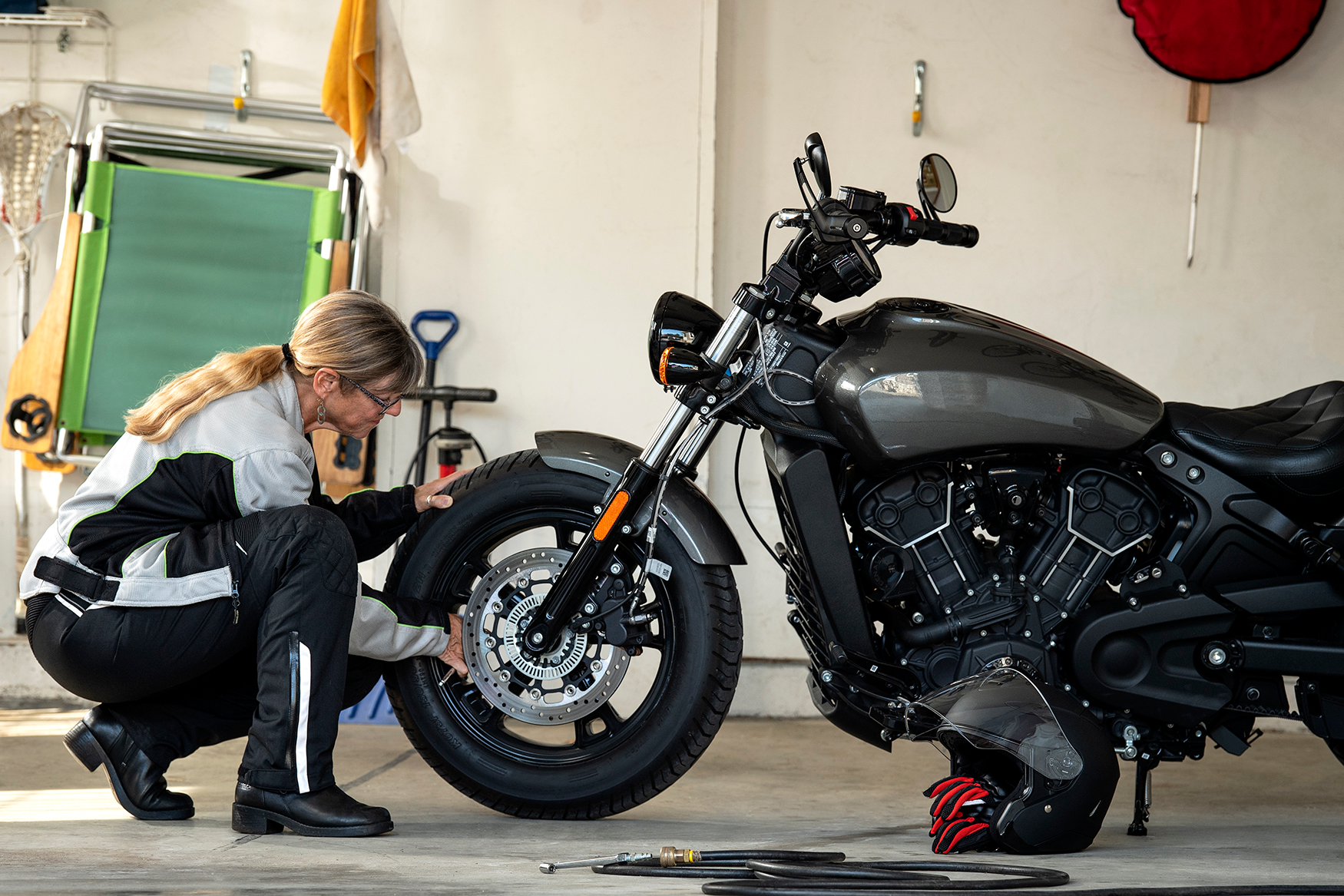
If you’re about to head out for a ride, there are things that you can do to make sure that you’ll be as safe as possible out there:
- Start with a T-CLOCs inspection.
- Check all the basic functions of your motorcycle.
- Wear All The Gear All The Time (ATGATT) and make sure that it all fits correctly.
- Wear a full-face helmet instead of a brain bucket or three-quarter helmet.
- Consider one of the airbag jackets available or an over-the-top airbag vest.
- Obey the rules of the road.
- Completely cover all your extremities.
- Ride defensively, and always have an exit strategy.
- Practice good judgment – even before you get on the bike.
- Watch out for road debris and other road hazards.
- Wear some type of reflective gear, or add retroreflective tape on your bike.
Bottom Line: Is Motorcycle Riding Dangerous?
Well, you’ve now got a novel’s worth of facts and data, what do you think?
Safe motorcycling is possible, with continued ongoing rider education. There are risks, and those risks cannot be avoided, but there are plenty of ways to enjoy motorcycle riding without getting swayed by the potential “what ifs” out there.
It’s worth mentioning that May (which is nearly upon us) is Motorcycle Safety Awareness Month. If you’re yet to get on the road, make sure to watch out for motorcycles on the road. And if you’re already riding, remember to stay vigilant and develop good habits so you can enjoy the open road for as long as possible.
